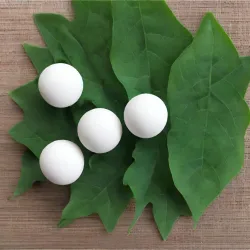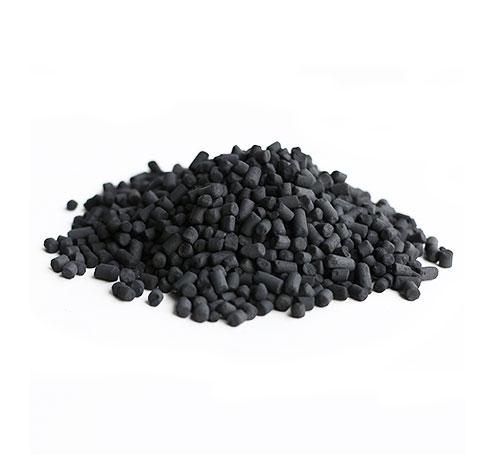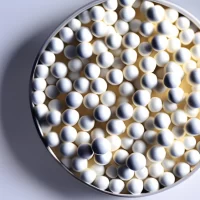Silica gel, often recognized as the small packets found in shoeboxes or electronic gadgets, is more than just a humble desiccant.
This unassuming substance has a myriad of uses that extend beyond moisture control. In this blog, we'll delve into the fascinating world of silica gel and uncover its diverse applications.

Contents
- 1 What we will talk about in this article?
- 2 What is Silica Gel?
- 3 What is Silica Gel Used For?
- 4 Is Silica Gel Toxic?
- 5 Will I Die If I Eat Silica Gel?
- 6 Is Silica Gel Polar?
- 7 Can Silica Gel Kill A Dog?
- 8 How To Dry Flowers With Silica Gel?
- 9 What Happens If You Put Silica Gel In Water?
- 10 How Long Does Silica Gel Last?
- 11 Conclusion
What we will talk about in this article?
What is Silica Gel?
Silica gel is a porous and granular form of silicon dioxide, a compound that is commonly found in nature as quartz. It is synthetically produced and has a highly porous structure, allowing it to absorb and hold moisture. The primary characteristic of silica gel is its ability to act as a desiccant, meaning it can absorb and adsorb water vapor, making it a valuable tool for controlling humidity and preventing the growth of mold and degradation of various products.
The structure of silica gel contains a network of interconnecting microscopic pores that attract and trap water molecules. It is often sold in small, translucent packets or sachets, and you'll commonly find them packaged with items that are sensitive to moisture, such as electronics, leather goods, medications, and certain food products.
Silica gel is known for its high surface area and excellent adsorption capacity. Once it reaches its moisture-holding capacity, it can be regenerated by heating it to release the trapped moisture, making it reusable.
Beyond its role as a desiccant, silica gel finds applications in chromatography, as a drying agent in the preparation of certain substances, and even in the preservation of flowers. It's a versatile material with properties that make it valuable in a range of industries and everyday scenarios where moisture control is crucial.
What is Silica Gel Used For?
Silica gel is used for a variety of purposes due to its excellent moisture-absorbing properties and versatile applications. Here are some common uses of silica gel:
Moisture Control in Packaging:
- Silica gel is often used as a desiccant in packaging to control humidity and prevent moisture damage to items such as electronics, leather goods, clothing, shoes, and medications. It helps protect these items from mold, corrosion, and deterioration.
Electronics Protection:
- It is commonly placed inside the packaging of electronic devices to absorb moisture and prevent condensation, which can be detrimental to the sensitive components of electronic gadgets.
Preservation of Documents and Valuables:
- Silica gel is employed to protect important documents, photographs, and other valuables from moisture damage during storage. This is especially crucial in environments where humidity levels fluctuate.
Food Storage:
- Silica gel is used in food packaging to prevent moisture absorption, which can lead to spoilage and the growth of mold. It helps extend the shelf life of various food products, such as dried fruits, snacks, and spices.
Flower Preservation:
- Silica gel is utilized in the process of drying and preserving flowers. It helps maintain the shape and color of the flowers by absorbing moisture while avoiding the shrinkage and decay that can occur with other drying methods.
Gym Bags and Shoes:
- Placing silica gel packets in gym bags and shoes helps control odors by absorbing excess moisture, preventing the growth of bacteria and fungi that cause unpleasant smells.
Camera and Optical Equipment:
- Silica gel is often included in camera cases and packaging for optical equipment to prevent fogging and condensation on lenses.
Art and Museum Conservation:
- Museums and art conservators use silica gel to control humidity in the storage and display of sensitive artifacts and artworks, helping to preserve them over time.
Toolboxes and Storage Containers:
- Silica gel can be placed in toolboxes and storage containers to protect tools and equipment from rust and corrosion caused by moisture.
DIY Dehumidification:
- Silica gel can be used in small spaces like closets, drawers, and safes to reduce humidity and protect items from moisture damage.
Remember that silica gel is reusable; it can be reactivated by drying it out, making it an economical and environmentally friendly choice for moisture control in various applications.
Is Silica Gel Toxic?
Silica gel is generally considered non-toxic and safe for common uses. The gel itself is an inert and non-reactive substance, and it is not known to pose significant health risks. Silica gel is often used in contact with food products, medicines, and other items that come into direct contact with humans.
The packets of silica gel that you commonly find in product packaging are usually labeled with warnings such as "Do Not Eat" or "Keep Out of Reach of Children." While the silica gel itself is not toxic, these warnings are typically in place because the packets can present a choking hazard, and the manufacturers want to avoid any accidental ingestion.
It's important to note that some silica gel products may be treated with indicator crystals that change color as they absorb moisture. These indicator crystals often contain cobalt chloride, which is considered a possible carcinogen and may be harmful if ingested in large amounts. However, the use of cobalt chloride in consumer products has decreased due to its potential health risks.
To ensure safety, it's a good practice to follow any warnings or instructions provided by the manufacturer. If you accidentally ingest silica gel or experience any adverse reactions, it's recommended to seek medical attention. As a preventive measure, store silica gel packets out of reach of children and pets.
Will I Die If I Eat Silica Gel?
Silica gel is generally considered non-toxic, and ingesting a small amount of it is unlikely to be fatal. However, it's important to note that silica gel packets often come with warnings such as "Do Not Eat" or "Keep Out of Reach of Children."
These warnings are primarily there because the packets can pose a choking hazard, and the manufacturers want to avoid any accidental ingestion.
The main concern with silica gel is not the silica itself but the potential presence of indicator crystals that may be used in some products. Some silica gel packets contain indicator beads or crystals that change color as they absorb moisture. These indicators often contain substances like cobalt chloride, which is classified as a possible carcinogen and can be harmful if ingested in large amounts.
If you or someone else accidentally ingests silica gel or experiences any adverse reactions, it's recommended to seek medical attention. While the risk of serious harm from ingesting silica gel is low, it's always better to err on the side of caution and consult with a healthcare professional for advice tailored to the specific situation.
Is Silica Gel Polar?
Silica gel is a polar substance. It consists of silicon dioxide (SiO2) molecules arranged in a three-dimensional network. The silicon-oxygen (Si-O) bonds in silica gel are polar covalent bonds. In a polar covalent bond, the electrons are not shared equally between the atoms, creating a partial positive charge on one atom (in this case, silicon) and a partial negative charge on the other atom (oxygen).
This polarity arises because oxygen is more electronegative than silicon, meaning it has a stronger tendency to attract electrons. The resulting unequal sharing of electrons leads to a separation of charges within the SiO2 molecule, making silica gel overall a polar material.
The polar nature of silica gel is relevant in its ability to adsorb and interact with polar molecules, such as water. This property is one of the reasons why silica gel is effective as a desiccant for removing moisture from the air and preventing its detrimental effects on various products and materials.
Can Silica Gel Kill A Dog?
While silica gel itself is not likely to be fatal to dogs if ingested in small amounts, there are some considerations to keep in mind:
Choking Hazard: Silica gel packets are typically small and can pose a choking hazard to dogs, especially small breeds or puppies. Ingesting the packet whole may cause an obstruction in the digestive tract.
Indicator Crystals: Some silica gel packets contain indicator crystals, which may include substances like cobalt chloride. Cobalt chloride is considered harmful and can be toxic if ingested in sufficient amounts. Ingesting a large quantity of indicator crystals could potentially lead to health issues.
If you suspect that your dog has ingested silica gel or a silica gel packet, it's essential to monitor them for any signs of distress or unusual behavior. If you notice symptoms such as vomiting, diarrhea, lethargy, or any other concerning signs, it's crucial to seek veterinary attention promptly.
As a preventive measure, store items containing silica gel, especially those with indicator crystals, in places that are inaccessible to your pets to minimize the risk of accidental ingestion. Always consult with a veterinarian if you have specific concerns about your dog's health or if they have ingested any potentially harmful substances.
How To Dry Flowers With Silica Gel?
Drying flowers with silica gel is a popular method that helps preserve the flowers' shape and color. Silica gel is a desiccant, meaning it absorbs and holds moisture, making it an effective way to dry flowers while minimizing the loss of their original beauty. Here's a step-by-step guide on how to dry flowers using silica gel:
Materials Needed:
- Silica gel
- Airtight container with a lid
- Fresh flowers
- Pruning shears
- Fine brush (optional)
- Mesh or wire rack (optional)
Steps:
Select Fresh Flowers:
- Choose flowers that are in full bloom but not overly mature. Flowers with thick petals work well for this method.
Trim the Stems:
- Trim the stems of the flowers to the desired length using pruning shears. Remove any excess leaves or foliage.
Prepare the Silica Gel:
- Fill the bottom of an airtight container with a layer of silica gel. The container should be deep enough to accommodate the flowers without crowding.
Position the Flowers:
- Gently place the flowers on top of the silica gel, ensuring that they are not touching each other and are fully surrounded by the desiccant. Use a fine brush to carefully apply silica gel between petals or other intricate parts.
Cover the Flowers with Silica Gel:
- Carefully pour more silica gel over the flowers until they are completely covered. Ensure that the silica gel penetrates all areas of the flowers.
Seal the Container:
- Place the lid on the container and seal it tightly. This creates a controlled environment that allows the silica gel to absorb moisture from the flowers.
Wait for Drying:
- Allow the flowers to sit in the sealed container for about 1 to 7 days, depending on the type and size of the flowers. Check periodically to see if they are fully dried.
Remove the Dried Flowers:
- Once the flowers are completely dry, carefully uncover them and gently brush away any excess silica gel using a soft brush or your fingers.
Optional: Use a Rack for Drying:
- If you prefer, you can place the flowers on a mesh or wire rack above the silica gel rather than burying them in the desiccant. This may help air circulate more evenly around the flowers.
Drying flowers with silica gel helps retain their natural colors and shapes, making it an ideal method for preserving bouquets or creating floral arrangements for crafts and decorations.
What Happens If You Put Silica Gel In Water?
When silica gel is put in water, it undergoes a process called adsorption, where water molecules adhere to the surface of the silica gel particles. Silica gel has a high surface area with a network of microscopic pores, making it an excellent desiccant or drying agent. Here's what happens when silica gel is exposed to water:
Adsorption of Water:
- Silica gel attracts water molecules to its surface. The polar nature of the silica gel, with its oxygen-containing groups, allows it to form hydrogen bonds with water molecules.
Expansion and Color Change (for Some Types):
- Silica gel may expand slightly as it adsorbs water. Some types of silica gel include indicator crystals that change color as they absorb moisture. These indicators are often blue or orange when dry and turn pink or green when saturated with water.
Absorption Capacity:
- Silica gel has a high water-absorbing capacity. It can adsorb a significant amount of water relative to its weight, which is why it is commonly used to protect items from moisture damage in packaging.
Reusability:
- After silica gel has absorbed moisture, it can be regenerated by removing the water through heating. This makes silica gel a reusable desiccant.
It's important to note that while silica gel is effective at adsorbing moisture, it should not be used as a water purifying agent for drinking water. Silica gel packets often contain small amounts of additives, and they are not designed for use in water purification.
If you accidentally drop a silica gel packet into water or expose silica gel to moisture, it will become saturated over time. To reuse the silica gel, you can dry it by placing it in an oven at a low temperature until it regains its original dry state. Always follow the manufacturer's guidelines for regenerating silica gel to ensure safe and effective reuse.
How Long Does Silica Gel Last?
The lifespan of silica gel depends on its usage and the conditions to which it is exposed. Silica gel is a durable and long-lasting desiccant, and its effectiveness can be maintained over multiple uses. Here are some factors that can influence the lifespan of silica gel:
Saturation Level:
- The more moisture silica gel absorbs, the closer it gets to its saturation point. Once it reaches its maximum moisture-holding capacity, it will be less effective. Regularly regenerating or replacing saturated silica gel ensures its continued efficiency.
Environmental Conditions:
- The environmental conditions to which silica gel is exposed can impact its lifespan. In extremely humid environments, silica gel may reach its saturation point more quickly. Conversely, in drier conditions, it may last longer between regenerations.
Regeneration:
- Silica gel is reusable. Properly regenerating it by removing the absorbed moisture allows you to extend its lifespan. Regeneration is typically done by heating the silica gel to release the trapped moisture.
Quality of Silica Gel:
- The quality of the silica gel can affect its lifespan. High-quality silica gel is designed for durability and repeated use. Lower-quality or less robust silica gel may break down more quickly.
Storage Conditions:
- Silica gel should be stored in airtight containers when not in use to prevent it from absorbing moisture from the surrounding environment. Proper storage helps maintain its effectiveness over time.
Indicator Crystals:
- Silica gel packets with indicator crystals may have a limited lifespan for indicating moisture absorption. The color-changing properties of the indicators may diminish over time, but this doesn't necessarily affect the silica gel's ability to absorb moisture.
As a general guideline, silica gel can last for several years with proper care and maintenance. Regularly check and regenerate silica gel to ensure that it continues to effectively control moisture. If you notice that silica gel is no longer regenerating or seems less effective, it may be time to replace it. Always follow the manufacturer's guidelines for regenerating and reusing silica gel.
Conclusion
Silica Gel is a powerhouse in the battle against moisture. Whether it's preserving delicate flowers, protecting your latest gadget, or revolutionizing the way we store food, silica gel proves that big things come in small, granular packages.
The next time you encounter those silica gel sachets, appreciate the unsung hero that stands between your belongings and the relentless force of moisture.




